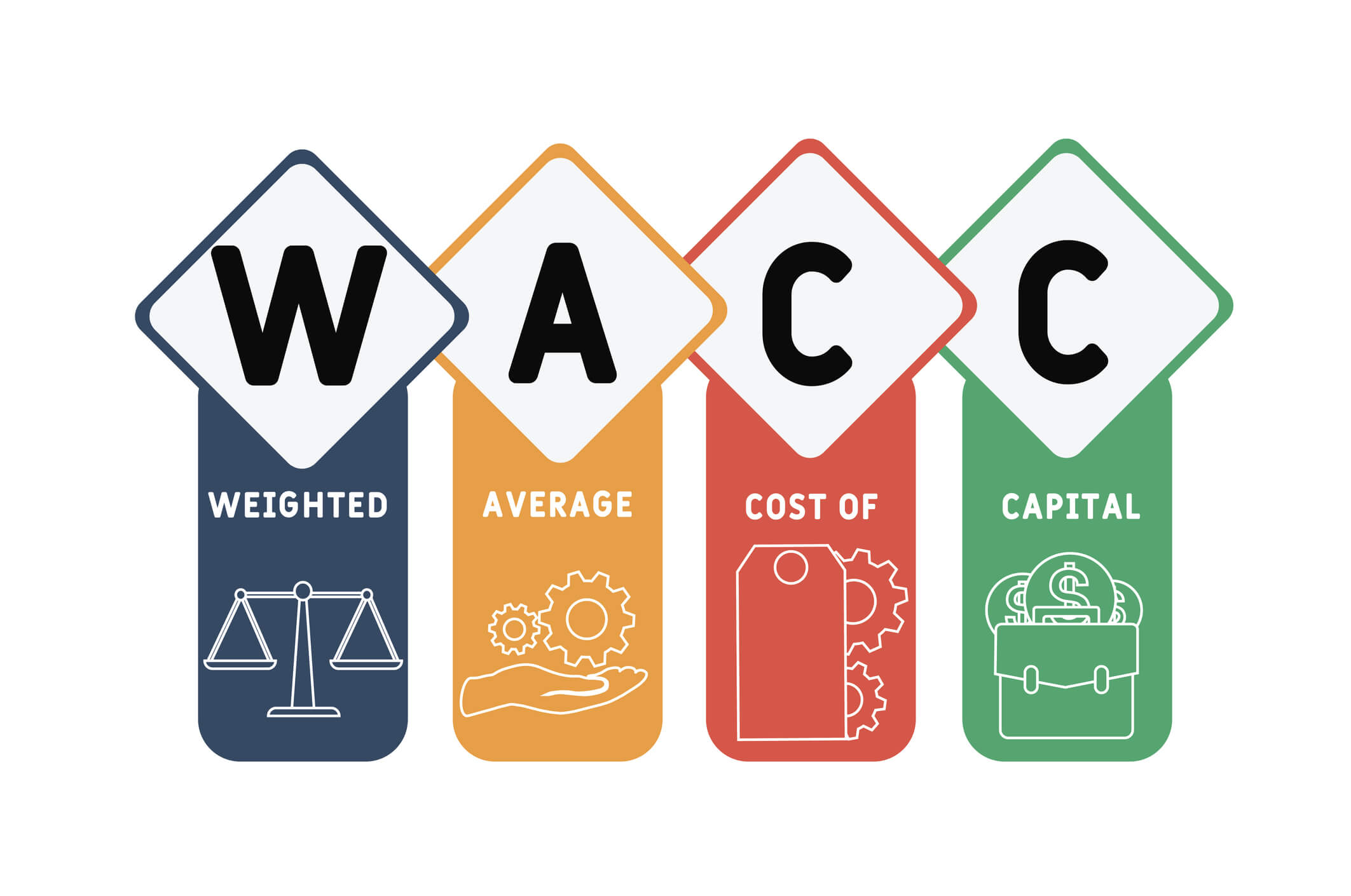By: Jennifer Brazer
Jennifer is the author of From Cubicle to Cloud and Founder/CEO of Complete Controller, a pioneering financial services firm that helps entrepreneurs break free of traditional constraints and scale their businesses to new heights.
Fact Checked By: Brittany McMillen
Characteristics of Marketing Control: Key Insights for Success
Characteristics of marketing control include systematic monitoring processes, measurement standards, variance analysis, and corrective action protocols that help businesses align marketing activities with strategic objectives. These foundational elements create a feedback loop that transforms raw marketing data into actionable insights for optimization.
I’ve spent over two decades watching businesses struggle with marketing controls – often investing heavily in campaigns without proper oversight mechanisms. At Complete Controller, we’ve analyzed financial data from thousands of businesses across industries, and one pattern remains consistent: companies with robust marketing control systems consistently outperform their competitors. Throughout this article, I’ll share practical frameworks and real-world examples that will help you implement effective marketing controls in your business, regardless of size or industry.

What are the characteristics of marketing control, and why do they matter?
- Marketing control characteristics include suitability, understandability, timeliness, flexibility, cost-effectiveness, and actionability
- Effective systems flag meaningful deviations from goals while filtering out normal market fluctuations
- Control mechanisms must balance comprehensive monitoring with focused analysis of key performance indicators
- When properly implemented, marketing controls transform vague strategies into measurable outcomes with clear ROI
- Controls should evolve with your business, adapting to new channels, market conditions, and organizational priorities
Foundation of Effective Marketing Control Systems
Marketing control systems serve as the central nervous system for your marketing operations. Without proper controls, even brilliant strategies can fail in execution. The most effective systems share several fundamental characteristics that transcend industry or business size.
At their core, successful marketing control systems maintain alignment between daily activities and long-term objectives. They create visibility into what’s working, what’s not, and why—allowing for data-driven decisions rather than gut feelings. A well-designed system turns marketing from a cost center into a measurable investment with clear returns.
Suitability and contextual relevance
Effective marketing control systems must be appropriate for your specific business context. What works for an enterprise won’t necessarily work for a startup or small business.
For small businesses, simplicity trumps complexity. Focus on tracking a handful of meaningful metrics like customer acquisition cost, conversion rates, and customer lifetime value. I’ve seen many SMBs overwhelmed by attempting to track every possible metric, resulting in analysis paralysis rather than actionable insights.
For larger enterprises, more sophisticated controls become necessary as marketing complexity increases. Department-specific KPIs, regional variations, and product-level metrics may all require monitoring and management through integrated dashboards.
Timeliness and real-time monitoring
In today’s fast-paced market, delayed information loses value rapidly. Modern marketing control systems must deliver insights quickly enough to enable course corrections before significant resources are wasted.
- Daily monitoring of high-impact metrics (ad spend, conversion rates)
- Weekly review of campaign performance and trend analysis
- Monthly strategic assessment of broader marketing objectives
- Quarterly deep-dive analysis and strategy refinement
The most effective organizations have moved beyond monthly or quarterly reporting cycles. Using marketing automation tools, 76% of companies now track campaign performance and customer journeys in real time, allowing for immediate tactical adjustments when needed.
Exception-based reporting
Strong marketing control systems highlight meaningful deviations while filtering out noise. Rather than overwhelming decision-makers with every metric, they focus attention on areas requiring intervention.
Exception-based reporting follows a simple principle: flag only what matters. This includes:
- Metrics falling outside predetermined variance thresholds
- Emerging trends that suggest future opportunities or threats
- Critical performance indicators tied directly to strategic goals
This targeted approach prevents information overload and ensures management attention remains focused on high-impact decisions.
Implementing Actionable Marketing Controls
The gap between theory and practice is where most marketing control systems fail. Implementation requires translating abstract concepts into practical workflows that your team can consistently execute.
When I work with clients at Complete Controller, we emphasize creating systems that generate insights, not just reports. The difference is crucial—reports tell you what happened, while insights tell you why it happened and what to do about it.
Defining measurable standards
Every effective control system begins with clear, measurable standards against which performance can be evaluated. These standards should be:
- Specific and quantifiable
- Aligned with broader business objectives
- Realistic yet challenging
- Time-bound with clear measurement periods
For example, rather than a vague goal to “increase brand awareness,” an effective standard might be: “Increase unprompted brand recall among target audience from 15% to 25% within six months, as measured by quarterly brand tracking surveys.”
These standards then become the foundation for your marketing measurement methods and evaluation processes.
Cross-functional collaboration
Marketing doesn’t exist in isolation. Effective control systems integrate data and insights from across the organization, particularly sales, finance, and operations.
- Sales and Marketing Alignment: Regular reconciliation of marketing qualified leads (MQLs) with sales qualified leads (SQLs) to identify conversion gaps
- Financial Integration: Ongoing monitoring of marketing spend against revenue generation to calculate true ROI
- Operational Feedback: Production capacity and inventory levels informing promotional timing and scale
This cross-functional approach ensures marketing decisions reflect the full business context, not just marketing department priorities.
Technology integration for control
Modern marketing strategy management techniques rely heavily on integrated technology systems. The right technology stack can automate data collection, streamline analysis, and facilitate real-time decision-making.
Key components often include:
- Customer Relationship Management (CRM) systems
- Marketing Automation Platforms
- Analytics and Reporting Dashboards
- Attribution Modeling Tools
- Project Management Systems
Companies using predictive analytics for marketing controls see 18.5% higher ROI than those relying on manual methods. These advanced tools help businesses anticipate market shifts and adjust strategies proactively, making controls more effective and efficient.

Real-World Applications of Marketing Control
Abstract principles only matter when they deliver real results. Let’s examine how organizations have implemented effective marketing controls to drive meaningful business outcomes.
Case study: Sprint’s in-house digital marketing transformation
Sprint faced declining market share and rising customer acquisition costs in a highly competitive telecommunications market. By bringing digital marketing in-house rather than relying exclusively on agencies, they created a more responsive control system.
The results were dramatic:
- 50% reduction in campaign adjustment time
- Improved customer targeting accuracy
- Substantial reduction in subscriber losses
Their internal team’s ability to analyze data in real-time and quickly adjust campaigns demonstrated how direct control improves marketing precision and ROI. This approach exemplifies the elements of successful marketing control in action.
Digital transformation of marketing controls
The shift to digital marketing has fundamentally changed how controls operate. In 2000, internet ads represented just 3.5% of total U.S. ad spending. By 2024, they account for 77.7% of the market.
This digital transformation has created both challenges and opportunities for marketing control:
- More granular data availability
- Faster feedback cycles
- Increased channel complexity
- Greater need for integration across platforms
Modern control systems must account for this digital-first reality while maintaining focus on overall marketing effectiveness, not just digital metrics in isolation.
Overcoming Common Control Challenges
Even well-designed marketing control systems face obstacles. Anticipating and addressing these challenges is essential for long-term success.
Data overload and analysis paralysis
The abundance of marketing data can become overwhelming without proper filtering and prioritization. Many organizations track everything but understand nothing.
To combat data overload:
- Establish a clear hierarchy of metrics with primary, secondary, and diagnostic indicators
- Create visual dashboards that highlight critical variations
- Schedule regular “insight sessions” focused on interpretation, not just reporting
- Use AI and machine learning to identify patterns and anomalies automatically
These approaches help transform raw data into meaningful marketing performance evaluation that drives action rather than confusion.
Resource constraints for small businesses
Small businesses often lack the resources for sophisticated marketing control systems. However, effective controls remain essential regardless of size.
For resource-constrained organizations:
- Focus on a limited set of high-impact metrics
- Leverage affordable or free analytics tools (Google Analytics, social media insights)
- Establish simple weekly review processes
- Prioritize customer feedback as a qualitative control mechanism
The key is consistency and focus rather than comprehensiveness. Even basic controls, consistently applied, yield better results than elaborate systems that are poorly maintained.
Future-Ready Marketing Control Frameworks
Marketing control systems must evolve as technologies and customer behaviors change. Forward-thinking organizations are already adapting their approaches to remain effective in this dynamic environment.
AI and predictive analytics in control systems
Artificial intelligence is transforming marketing oversight processes by shifting from reactive to predictive controls. Rather than simply identifying what went wrong, AI-powered systems can predict potential issues before they occur.
Volkswagen demonstrates this approach through their AI-targeted advertising system. By analyzing user behavior data, they prioritized high-conversion audiences and lowered cost-per-lead by 30%, showing how automated controls maximize budget impact.
These predictive capabilities enable:
- Anticipatory budget adjustments before campaign performance declines
- Early identification of emerging market opportunities
- Automated optimization of channel mix and creative elements
- Personalized customer journeys based on behavioral predictions
Organizations embracing these technologies gain significant competitive advantages through more efficient resource allocation and faster market response.
Integrated performance management
The future of marketing control involves breaking down silos between marketing metrics and broader business performance indicators. This integration creates a more holistic view of marketing’s impact.
Leading organizations are implementing:
- Unified dashboards combining marketing, sales, and financial metrics
- Cross-functional KPIs that measure handoffs between departments
- Customer lifetime value calculations that incorporate all touchpoints
- Attribution models that account for both online and offline interactions
These integrated approaches align marketing controls with the principles of marketing performance management that drive sustainable business growth.
Final Thoughts: Transforming Control into Competitive Advantage
Effective marketing control isn’t just about measurement—it’s about creating a culture of continuous improvement and accountability. When properly implemented, these systems transform marketing from a creative black box into a strategic driver of business value.
I’ve seen firsthand how businesses transform when they implement robust marketing controls. The clarity, confidence, and competitive edge that comes from knowing exactly what’s working (and what isn’t) can’t be overstated. At Complete Controller, we’ve helped countless clients integrate their marketing and financial controls to create truly data-driven organizations.
Ready to transform your marketing effectiveness through better controls? Contact our team at Complete Controller for specialized guidance on integrating marketing performance with financial management for maximum business impact.

FAQ
What are the four main types of marketing control systems?
The four main types are annual plan control (monitoring ongoing performance against yearly goals), profitability control (measuring actual profit contribution of different products or segments), efficiency control (evaluating cost-effectiveness of marketing activities), and strategic control (ensuring marketing strategies remain aligned with changing market conditions and company capabilities).
How often should marketing controls be reviewed and updated?
High-impact metrics should be monitored daily or weekly, while broader strategic controls typically require monthly review. The control system itself should undergo comprehensive evaluation quarterly to ensure it remains relevant as business objectives and market conditions evolve.
What software tools are most effective for marketing control?
The most effective tools include CRM platforms (Salesforce, HubSpot), marketing automation systems (Marketo, Mailchimp), analytics platforms (Google Analytics, Adobe Analytics), and business intelligence tools (Tableau, Power BI). The ideal combination depends on your business size, complexity, and specific marketing activities.
How do marketing controls differ between B2B and B2C businesses?
B2B marketing controls typically emphasize lead quality metrics, sales cycle length, and account-based marketing performance, with longer measurement timeframes. B2C controls focus more on immediate conversion rates, customer acquisition costs, and brand perception metrics across higher volume, shorter-cycle customer journeys.
What is the relationship between marketing planning and marketing control?
Marketing planning establishes strategic objectives and defines the standards against which performance will be measured. Marketing control then monitors actual performance against these standards, identifies variances, and guides corrective actions. Effective control systems create a feedback loop that informs future planning cycles, creating continuous improvement.
Sources
- Bell, Ryan, et al. “In-housing Digital Marketing at Sprint Corp.” Harvard Business School, June 2020, www.hbs.edu/faculty/Pages/item.aspx?num=57758
- ExplodingTopics. “31+ Marketing Automation Statistics & Trends (2024).” 21 Feb. 2024, explodingtopics.com/blog/marketing-automation-stats
- FAO. “Chapter 3 Marketing Strategy, Planning and Control.” www.fao.org/4/w3240e/w3240e03.htm
- Fiveable. “Implementation and Control of Marketing Strategies.” 7 Aug. 2024, library.fiveable.me/marketing-strategy/unit-15/implementation-control-marketing-strategies/study-guide/IWCuSLqShDSnAlFl
- Forbes. “How AI Is Transforming Marketing.” Forbes Tech Council, 8 Sept. 2020, www.forbes.com/sites/forbestechcouncil/2020/09/08/how-ai-is-transforming-marketing/
- Google Sir. “11 Characteristics of Effective Marketing Control System.” www.googlesir.com/characteristics-of-effective-marketing-control-system/
- Harvard Business Review. “The Right Way to Handle Data Overload.” July 2017, hbr.org/2017/07/the-right-way-to-handle-data-overload
- IAB. “Internet Advertising Revenue Report.” 2000, www.iab.com/wp-content/uploads/2015/05/IABPwC004_2000.pdf
- McKinsey & Company. “Marketing and Sales Insights.” www.mckinsey.com/business-functions/marketing-and-sales/our-insights
- Young Urban Project. “6 Best AI Marketing Case Studies.” 19 May 2025, www.youngurbanproject.com/ai-marketing-case-studies/
- Zion Market Research. “Digital Marketing Analytics Market Size Report.” 2023, www.zionmarketresearch.com/report/digital-marketing-analytics-market-size
 About Complete Controller® – America’s Bookkeeping Experts
About Complete Controller® – America’s Bookkeeping Experts Complete Controller is the Nation’s Leader in virtual bookkeeping, providing service to businesses and households alike. Utilizing Complete Controller’s technology, clients gain access to a cloud platform where their QuickBooks™️ file, critical financial documents, and back-office tools are hosted in an efficient SSO environment. Complete Controller’s team of certified US-based accounting professionals provide bookkeeping, record storage, performance reporting, and controller services including training, cash-flow management, budgeting and forecasting, process and controls advisement, and bill-pay. With flat-rate service plans, Complete Controller is the most cost-effective expert accounting solution for business, family-office, trusts, and households of any size or complexity.

 What is QuickBooks?
What is QuickBooks?
 How-To Add NSF Checks to QuickBooks Online
How-To Add NSF Checks to QuickBooks Online About Complete Controller® – America’s Bookkeeping Experts Complete Controller is the Nation’s Leader in virtual bookkeeping, providing service to businesses and households alike. Utilizing Complete Controller’s technology, clients gain access to a cloud platform where their QuickBooks™️ file, critical financial documents, and back-office tools are hosted in an efficient SSO environment. Complete Controller’s team of certified US-based accounting professionals provide bookkeeping, record storage, performance reporting, and controller services including training, cash-flow management, budgeting and forecasting, process and controls advisement, and bill-pay. With flat-rate service plans, Complete Controller is the most cost-effective expert accounting solution for business, family-office, trusts, and households of any size or complexity.
About Complete Controller® – America’s Bookkeeping Experts Complete Controller is the Nation’s Leader in virtual bookkeeping, providing service to businesses and households alike. Utilizing Complete Controller’s technology, clients gain access to a cloud platform where their QuickBooks™️ file, critical financial documents, and back-office tools are hosted in an efficient SSO environment. Complete Controller’s team of certified US-based accounting professionals provide bookkeeping, record storage, performance reporting, and controller services including training, cash-flow management, budgeting and forecasting, process and controls advisement, and bill-pay. With flat-rate service plans, Complete Controller is the most cost-effective expert accounting solution for business, family-office, trusts, and households of any size or complexity.













